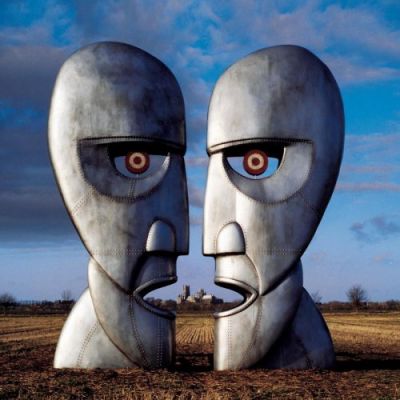
The Division Bell (1994)

1. Cluster One
2. What Do You Want From Me
3. Poles Apart
4. Marooned
5. A Great Day For Freedom
6. Wearing the Inside Out
7. Take it Back
8. Coming Back to Live
9. Keep Talking
10.Lost for Words
11.High Hopes
By the time The Division Bell arrived in 1994, Pink Floyd was long past the point of needing to prove anything. Roger Waters was gone, of course—still casting a long shadow—but this time around, the remaining trio (David Gilmour, Nick Mason, and the newly reinstated Richard Wright) put together something far more convincing than their last go at it. Whereas A Momentary Lapse of Reason felt like a David Gilmour solo album trying to sound like Pink Floyd, The Division Bell actually does sound like Pink Floyd—or at least the band they had become.
Richard Wright's official return to full band status is likely a key reason why this feels more cohesive. The album leans heavily on keyboards and piano textures, which give the songs more room to breathe. Wright hadn’t had a writing credit since the Wish You Were Here days, but here he co-writes several tracks and even sings lead on one—his first vocal spotlight since the late '70s. It’s a welcome return.
Musically, this is still miles away from the Waters-dominated era. There’s no dense, brooding concept to unravel, no scathing political monologues, and no operatic wall-building. Instead, the band opts for a gentler, more introspective sound. There’s an overarching theme—communication and its frequent breakdown—which may or may not be a thinly veiled commentary on their former bandmate. If so, it’s delivered with more melancholy than malice.
Gilmour is firmly in control here. His vocals are strong, his guitar work is stellar, and the album benefits from his understated confidence. He’s not trying to reinvent the wheel; he’s just refining what was already there. And while none of the songs particularly leap out as instant classics, that’s actually one of the album’s strengths. It plays like a unified piece, flowing gracefully from the ambient opener Cluster One (complete with SETI radio static) to the grand, sweeping finale High Hopes, which is as close to anthemic as this version of Floyd gets.
Radio latched onto Keep Talking and Take It Back, but even the deep cuts—Poles Apart, Marooned, Wearing the Inside Out—fit together like chapters in a calm, slowly unfolding story. There’s an emotional thread running through it all, even if it doesn’t hit you over the head like The Wall or Animals did. In fact, that might be the point.
In retrospect, The Division Bell now stands as Pink Floyd’s final studio statement. That it came out around the same time as Waters’ own well-received Amused to Death makes one wonder—again—what they might’ve accomplished had they managed to work together. But personality clashes die hard, and the Cold War within Pink Floyd was never quite thawed.
Still, a small epilogue came in 2005, when the classic lineup (yes, all four) briefly reunited for Live 8. It was a stunning moment of reconciliation. Waters smiled. Gilmour didn’t bite. Wright looked content. Then, not long after, Wright was gone—lost to cancer in 2008. Any dream of a full-circle return died with him.
So The Division Bell remains the closing chapter. And all things considered, it’s a graceful one.
Go back to the main page
Go To Next Review